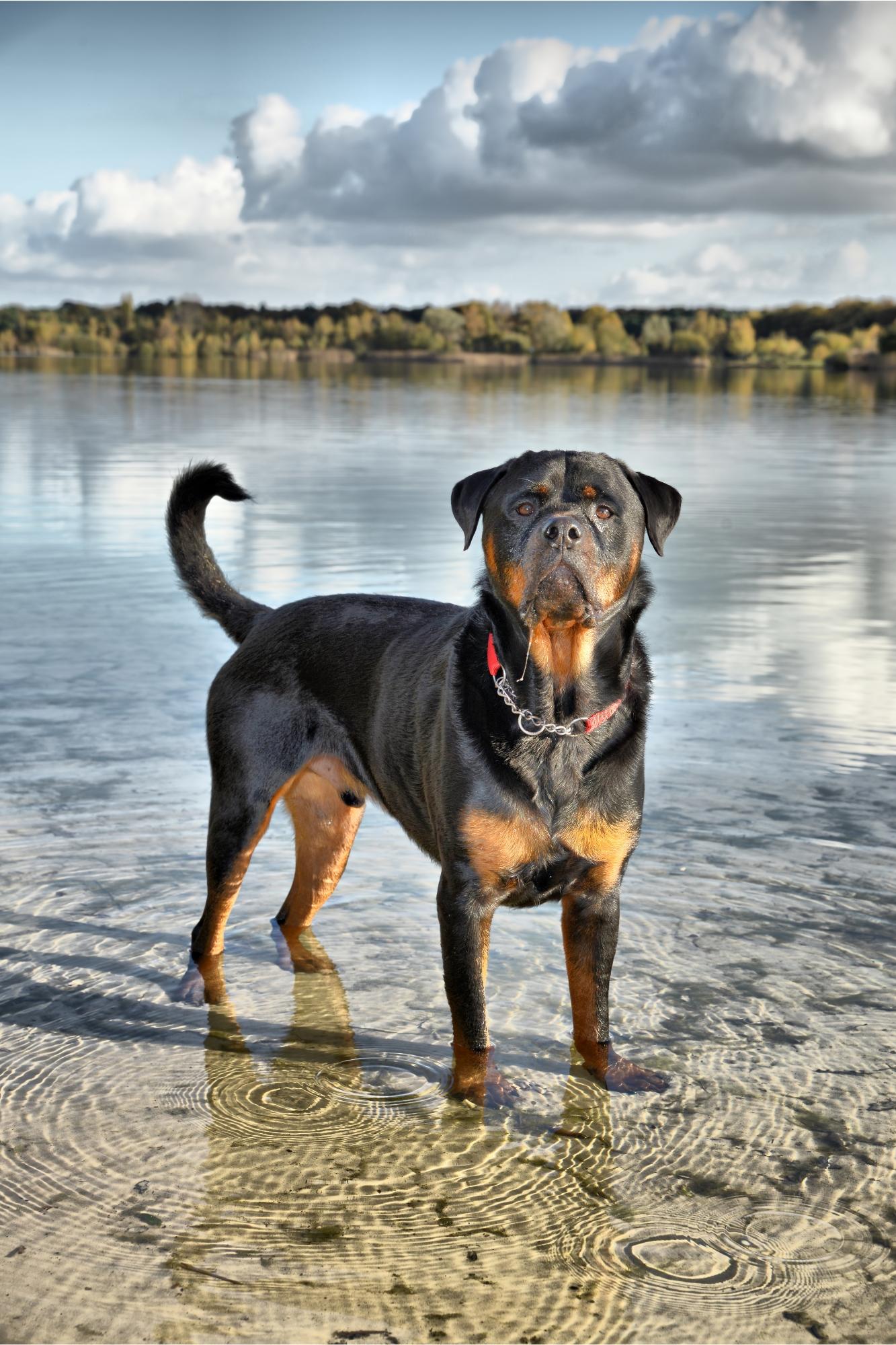ROTTWEILER
| Group: | Working |
|---|---|
| Size: | Large |
| Temperament: | Protective,Confident and Faithful |
| Height: | 24-27 inches (male), 22-25 inches (female) |
| Weight: | 42-60 Kg (male), 35-45 Kg (female) |
| Life Expectancy: | 10-11 years |
| Origin: | Germany |
| Coat Length: | Short |
| Coat Type: | Smooth |
| Color: | Black & Mahogany Black & Tan Black & Rust |
About
The Rottweiler, once used as a cattle dog in southern Germany, has a bad reputation as a vicious guard dog and a commanding status symbol. The Rottweiler is not inherently unruly, despite the breed's great strength, impressive swagger, and easily elicited protective responses. This dog can become a calm and obedient pet with careful training from a firm, seasoned owner who is aware of potential aggression triggers. Although their size and sturdy build might suggest otherwise, Rottweilers are more agile than they appear and enjoy lots of vigorous exercise.
Nutrition
A high-quality dog food developed particularly for large breeds is advised, including high-quality protein sources like meat, fish, and eggs, as well as carbs, fiber, vitamins, and minerals. It is critical to ensure that the meal is appropriate for their age, weight, and activity level. Feeding children table leftovers might lead to stomach issues and obesity. It is also critical to provide fresh water at all times to keep them hydrated. Frequent exercise and veterinarian visits are also essential for their general health.
Ideal Meal Breakdown
Protein
30
Fat
20
Carbohydrates
42
Others
8
Exercise
Rottweilers adore swimming, trotting, and being around their owners. The breed should have daily access to exercise because it is athletic and muscular. If there are tasks to be completed, Rottweilers are excellent workers who learn to cart easily and excel at herding, tracking, and obedience. The Rottweiler is capable of learning any canine skill there is. Any dog who is overweight should exercise regularly to maintain their health and fitness.
Grooming
The outer coat of the Rottweiler is flat, straight, and medium in length. The neck and thighs are covered in the undercoat. He needs to be brushed once per week and bathed frequently. Although he will shed more profusely twice a year, typically in the spring and fall, he only sheds very moderately for the majority of the year. Weekly tooth brushing and nail trimming are required for him. When trimming the nails, a grinding tool like a Dremel works particularly well.
Training
The Rottweiler needs to be trained from an early age. To raise a well-behaved Rottweiler, you must exercise leadership, socialise the puppy, enrol in foundational training classes, and live with the owner. Because they are "people dogs," Rottweilers do poorly when kept away from people and daily experiences. Despite some potential stubbornness, the breed is intelligent, highly trainable, and eager to please. Discipline must be consistent, equitable, and firm without being harsh. It is best to avoid roughhousing with the Rottweiler because it could breed aggression. In a variety of dog sports, Rottweilers excel, and the breed collaborates with a human partner in a variety of practical capacities.
Health
Responsible Rottweiler breeders have prospective sires and dams examined for health issues such as hip dysplasia, an X-ray-detectable hip joint malformation, eye diseases, and heart conditions before mating. As it does in all dogs, the breed is prone to cancer on occasion. A careful vaccination schedule can prevent cancer and lengthen life by boosting the immune system and keeping both sexes healthy until at least age six.
History
Roman legions on their conquest campaigns carried their herds as food to remote regions of the globe. Dogs that could move the herd and guard it were a necessity for the army. The distant ancestor of the Rottweiler that exists today was created by the Romans using Asian mastiff types as breeding stock. Numerous German breeds got their start with the dogs that the Romans introduced to these regions. Roman drover dogs were employed in the cattle town of Rottweil for centuries after the fall of the empire. Because of their work transporting herds from pasture to market and defending everyone along the way from thieves and rustlers, they were given the name Rottweiler Metzgerhund, or Butcher's Dog of Rottweil.
